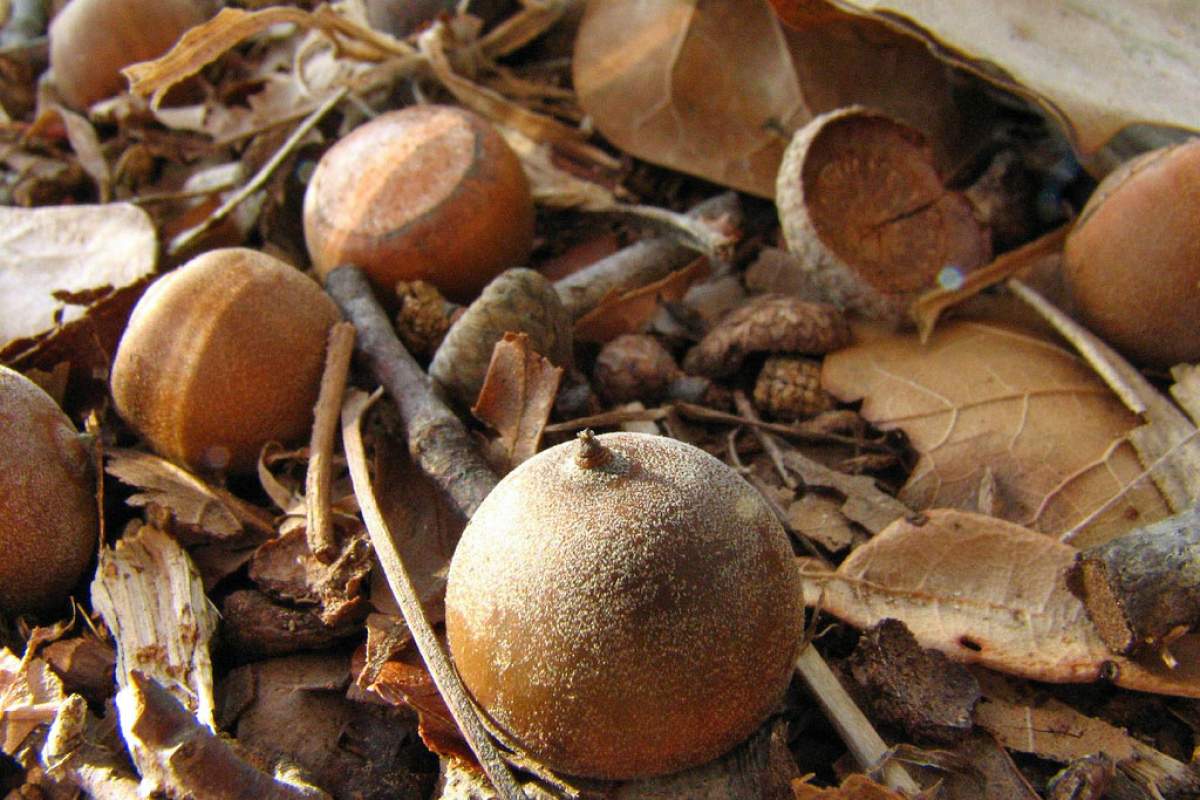
In the Appalachian Mountains of Virginia it seems that the oak trees synchronize their production of acorns in a way that lets them stay one step ahead of the mice.
Who Wins?
In years that the white-footed mouse population is low, acorn production is high. Then in years when there are a lot of mice, the oak trees produce very few acorns. It looks like the trees are pulling a fast one on the mice to keep the rodents from eating all their seeds.
It works like this: when the mouse population is low the trees produce lots of acorns, many times more than the mice could possibly eat. With the help of this bountiful food supply there is a mouse population explosion. Then for the next 3 or 4 years the trees produce very few acorns, if any. This lack of food causes a marked decline in the mouse population. The drop in the number of mice is followed by an increase in acorn production. And so the cycle goes.
This strategy, if that is what it is, results in the survival of more seeds to germinate.
How Do The Trees Work Together?
It is not clear how the trees synchronize. It could be an as yet unknown chemical which passes from tree to tree triggering acorn production, or a group response to climate fluctuations.
It's more likely that the process evolved by chance: trees with more acorns in one year than the next, produced more offspring over time than those with smaller but consistent crops each year which fell prey to predators.
It could just be coincidence, but it sure is to the oak trees' advantage.









